The unusual lumpy shape of totem pole cactus is attention-grabbing. Instead of the upright ribs typical of most cactus species, this variation of senita cactus resembles a melted candle, with randomly spaced bulbous shapes up and down its length. Besides its rather odd appearance, totem pole cactus is almost always thornless, making it a popular choice as a vertical accent in the background or up close in a container.
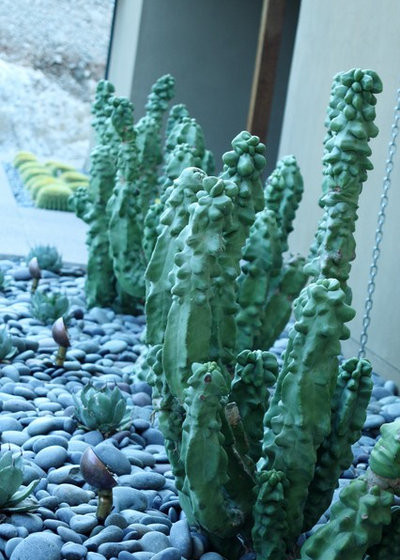
Rocket Garden Landscape Design
Botanical name: Pachycereus schottii var.
monstrosus (syn.
Lophocereus schottii var.
monstrosus)
Common name: Totem pole cactus
Origin: Native to Arizona and Baja California, Mexico
Where it will grow: Hardy to 20 degrees Fahrenheit, or minus 6.7 degrees Celsius (USDA Zone 9; find your zone)
Water requirement: Water monthly in spring and summer
Light requirement: Full sun
Mature size: 10 to 12 feet tall
Benefits and tolerances: Drought-tolerant
When to plant: Spring, summer or fall
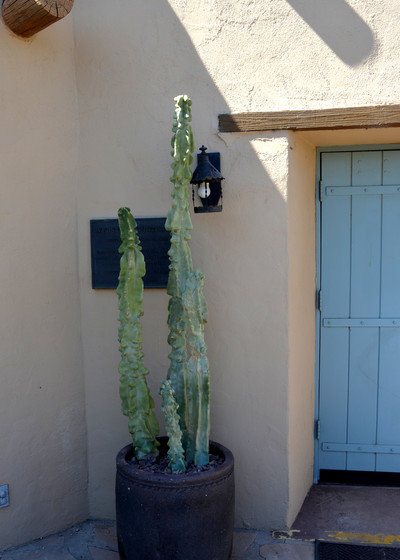
Noelle Johnson Landscape Consulting
Distinguishing traits. The lumpy surface of totem pole cactus often tempts people to reach out and touch it, usually without fear of being stabbed, as it’s almost always thornless. This columnar cactus is an attractive dusty green color and provides a visually cooling element in the landscape. New stems can form on older stems, creating a branching appearance.

Stonecreek Building Company, Inc.
How to use it. The columnar shape of this cactus makes it suitable for narrow areas, where it can be used in a raised bed for an unusual vertical accent. This Southwestern native also does very well in containers when planted in a mixture of equal parts potting soil, sand and perlite.
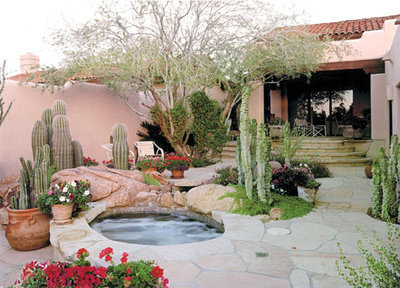
Exteriors By Chad Robert
In addition, its thornless attribute makes totem pole cactus a welcome addition to areas near foot traffic, because there will be no danger of accidental injury.
Pair totem pole cactus with succulents that have similar water requirements, such as Queen Victoria agave (
Agave victoria-reginae), golden barrel cactus (
Echinocactus grusonii) and resin spurge
(
Euphorbia resinifera).
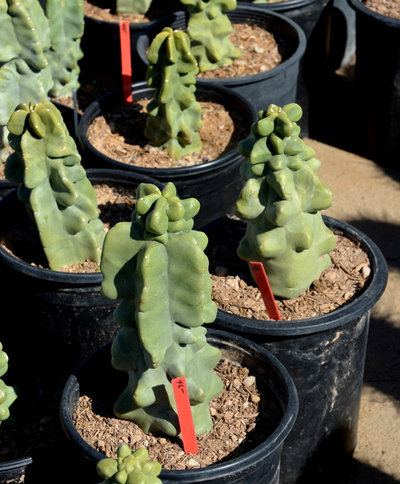
Noelle Johnson Landscape Consulting
Planting notes. Plant in very well-drained soil in full sun.
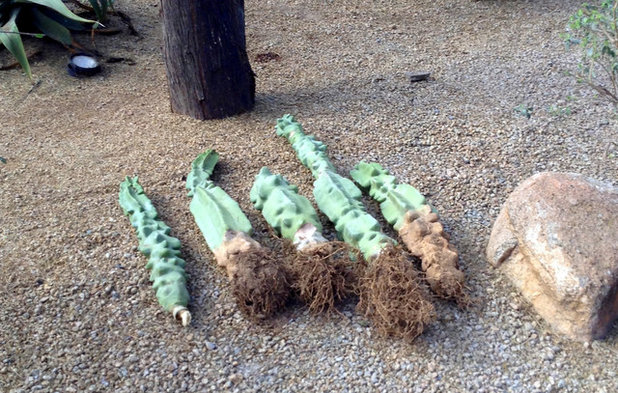
Noelle Johnson Landscape Consulting
Totem pole cactus transplants ready to be planted
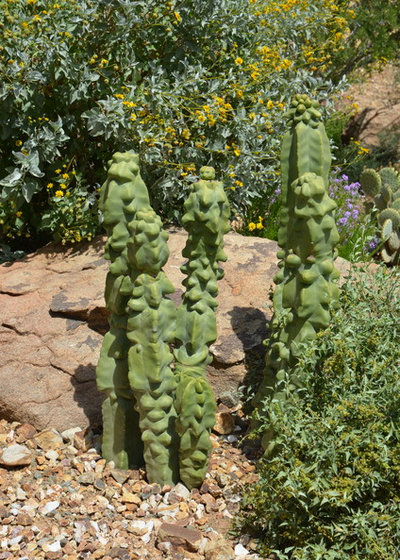
Noelle Johnson Landscape Consulting
This variety of senita cactus can be propagated only by cuttings. It can be purchased as a transplant or started from a cutting. Here’s how to take a cutting from an existing cactus:
1. Select a 2- to 3-foot stem of an existing totem pole cactus to remove, and cut it with a pruning saw.
2. Take the cut stem and place it in a dry, shady area for at least a week to allow the cut end to dry out and form a “callus.” (Planting it before the end has time to dry out can cause the cut end of the cactus to rot when it comes into contact with the soil.)
3. After a week has passed, plant the cutting in well-drained soil in a sunny area. Don’t water for at least two weeks.
4. Water twice a month through the first summer after planting, decreasing to monthly in fall. Water in winter only in the absence of rain. After the first year, water monthly in spring and summer and then rely on natural rainfall in fall and winter.





